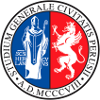EU-Artech
Eu-ARTECH was carried out during the period 2004-2009 and consisted of a Consortium between thirteen European Research Institutions operating at international level in cooperative interdisciplinary programs with conservatories, archaeologists and art historians and representing, in their respective countries, an important model for the global community interested in the study and of the cultural heritage.
The objective of Eu-ARTECH, a project coordinated by SMAArt Centre, was to achieve a permanent interoperability between the participating institutions, establishing a cooperation and knowledge exchanges with other institutions, in the view of building up a common European research area.
The work program of the five-year Eu-ARTECH project is organized as follows:
Networking
Access
Joint research activities
Networking
In Eu- ARTECH the networking program was dedicated to the promotion of knowledge exchange, the dissemination of good conservation practices and the establishment of common working parameters. to improve the comparability of results and the quality of research. The activity has been divided into two parts: 1) sharing of knowledge and resources - with the aim of disseminating the best analytical procedures and promoting the adoption of standards; 2) conservation methods and materials - where participants were called upon to exchange information on materials and methods used for conservation and to promote the establishment of best practices.
Access
Eu-ARTECH offered a coherent series of transnational access programs with advanced tools and skills for the study of works of art and their conservation.
The objectives of trans-national Eu-ARTECH access were:
- bring together as many research institutions as possible on European cultural heritage in a single group;
- allow the community of European users to have easy and transparent access to the advanced resources available to the institutions participating in the project;
- improve the quality of European research in this sector;
- offer access users an integrated, professional and consistent level of support;
Eu-ARTECH offered access to two types of infrastructure:
I - AGLAE, a unique advanced laboratory located in Paris at the Flore Pavilion of the Palais du Louvre (CNRS-C2RMF), in which it is possible to conduct non-destructive studies of elementary composition with high sensitivity and precision, in an interdisciplinary scientific environment where scientists , historians, restorers and conservators cooperate in artistic and conservation studies;
II - MOLAB, a unified group of joint infrastructures, based in Florence and Perugia (UNI-PG, CNR-ICVBC, OPD, INOA), in possession of a unique collection of portable instruments, accompanied by expertise on non-destructive investigation methods. MOLAB access is dedicated to art studies and/or to the evaluation of restoration and conservation methods, directly in a museum hall or in a restoration laboratory or in an archaeological site.
Joint research activities
The joint research activities have been dedicated to improving the performance of the participating infrastructures and the quality of the access offered to the scientific community. The research program was divided into two parts: JRA1: Development and evaluation of new systems for the conservation and restoration of outdoor stone and bronze monuments; JRA2: New methods in diagnostics: imaging and spectroscopy.

